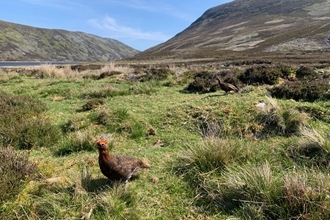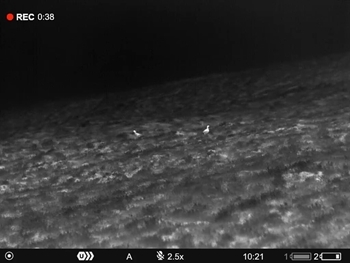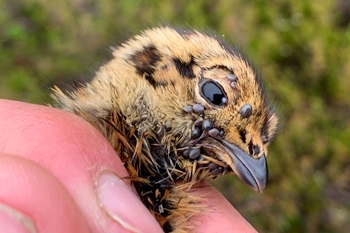By Kathy Fletcher, Senior Research Assistant

Adult grouse watching over brood we have caught |
The late May bank holiday is never much of a holiday for our Scottish uplands research team. This date often marks the start of our grouse chick-catching period. There is a window of just a few weeks to get around all the study areas to record the tick burdens – before the chicks are large enough to fly away from us.
The effect of mountain hare abundance on tick burdens
Reducing tick levels is an important component of grouse moor management, particularly in areas where the tick-borne diseases such as louping ill virus can cause high mortality for grouse chicks. Sheep are often treated with acaricides to act as tick mops and management also aims to reduce or exclude wild hosts e.g. deer and mountain hares to break the tick life cycle. The mountain hare has been fully protected in Scotland since 2021, making killing of mountain hares illegal unless a licence is granted to prevent damage to forestry, or for habitat restoration.
There is concern among some stakeholders that without management of hare populations their numbers will increase, which in turn may lead to higher tick burdens for ground-nesting birds (particularly grouse and wader species), even on moorland where sheep are regularly treated with acaricides.
This summer was the second of a five-year project to investigate the relationship between tick burdens on chicks and mountain hare abundance in the Scottish Highlands. Using trained pointing dogs and thermal imaging binoculars, we searched for red grouse broods when chicks were between 5 and 20 days old. At this stage, chicks are foraging in vegetation for insects and are particularly prone to picking up ticks (mainly the larvae and nymph stages).

Pair of grouse in thermal |
The thermal imaging binoculars, purchased with kind donations from the World Pheasant Association and Keith Howman, make our job much easier. Although they worked best in the early mornings when the air temperature was lower, we were still able to spot adult grouse from hill tracks later in the day. When we leave the vehicle to approach the adults, the binoculars were also useful to spot the chicks in clumps of vegetation. When the first chick is picked up it often calls, which can lead to the other chicks jumping from their hiding spots to run away in different directions. At that stage a low-tech pond-dipping net comes in handy!
On the study areas with no hill tracks, we use our trained pointing dogs to search for the grouse broods. Most of the work this year was done by nine-year-old Irish setter Mission. Once he “sets” he is a statue, even when the parent grouse try to distract him by fluttering around nearby.
Counting ticks

Heavily tick-infested grouse chick |
Once caught, we examined each chick’s head and counted the number of ticks we could see, then measured wing length and weight so we can look at body condition. This year the tick burdens were higher than we recorded across the same sites last year, with the worst case being a chick with 78 ticks attached. Overall, of the 217 broods examined, only 12% were free of tick in 2023, compared to 25% being free of tick in 2022.
Hopefully, some of the grouse chicks we saw will make it to fledging, but for some the high tick burdens may result in death. Our time on the hill also highlights to us the importance of checking for ticks on ourselves (and our dogs) and watching out for the symptoms of Lyme disease should we get bitten.